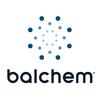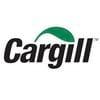Can methane be reduced on the dairy cost effectively?
Published: December 15, 2021
Summary
There is no question that the ongoing narrative concerning climate change and various “man-induced” gas emissions (including ammonia, carbon dioxide, methane and nitrous oxide) includes dairy production. While many producers (and others involved in agriculture) may not agree with the significance or level of gas contributions of agriculture to the total production, that disagreement ...
Related topics:
Mentioned in this news release:

Recommend
Comment
Share
20 de diciembre de 2021
I am very interested in the information that is given on Bovaer Feed Additive and its effect ob reducing Methane by up to 36%.
I would be very interested if there is further information on trial work with Bovaer. This product looks attractive but I suppose the economics of it must be considered also
Recommend
Reply

4 de octubre de 2025
Yes, methane can be reduced on dairies, but cost-effectiveness is still unclear. Feed additives like Bovaer, seaweed, and plant extracts can cut emissions 20–80% without hurting milk yield, and better nutrition improves efficiency. The barrier is cost: unless incentives, consumer premiums, or cheaper additive prices emerge, widespread adoption may not be financially viable for most producers.
Alvaro Garcia DVM PhD
Dellait Animal Nutrition and Health
Alvaro Garcia DVM PhD
Dellait Animal Nutrition and Health
Recommend
Reply
Doctor.com
18 de octubre de 2025
@Alvaro Garcia
Indeed, your observation is scientifically valid.
Methane mitigation in dairies through nutritional interventions has demonstrated promising results under controlled research conditions. Feed additives such as 3-nitrooxypropanol (Bovaer), Asparagopsis spp. (red seaweed), and various plant secondary metabolites (tannins, saponins, essential oils) can suppress methanogenesis by inhibiting methanogenic archaea or redirecting hydrogen toward alternative pathways like propionate formation. Reported reductions of 20–80% in enteric methane are well-documented, with negligible or even positive effects on milk yield and feed conversion efficiency.
However, the economic feasibility remains the major limiting factor. The cost of additives, lack of established carbon credit frameworks, and absence of consumer-driven incentives make large-scale adoption challenging, especially for small and medium dairy farmers. For sustained implementation, there is a need for:
Life-cycle cost-benefit assessments of mitigation options,
Integration with carbon markets or climate-smart incentive schemes, and
Localized feed-based mitigation strategies utilizing regionally available bioresources.
In summary, while the biological efficacy of methane mitigation technologies is well-established, their economic sustainability and policy integration will determine their practical impact in real-world dairy systems.
Dr.M.Saibutcharao
Asst.Director(AH)
saii@doctor.com
Indeed, your observation is scientifically valid.
Methane mitigation in dairies through nutritional interventions has demonstrated promising results under controlled research conditions. Feed additives such as 3-nitrooxypropanol (Bovaer), Asparagopsis spp. (red seaweed), and various plant secondary metabolites (tannins, saponins, essential oils) can suppress methanogenesis by inhibiting methanogenic archaea or redirecting hydrogen toward alternative pathways like propionate formation. Reported reductions of 20–80% in enteric methane are well-documented, with negligible or even positive effects on milk yield and feed conversion efficiency.
However, the economic feasibility remains the major limiting factor. The cost of additives, lack of established carbon credit frameworks, and absence of consumer-driven incentives make large-scale adoption challenging, especially for small and medium dairy farmers. For sustained implementation, there is a need for:
Life-cycle cost-benefit assessments of mitigation options,
Integration with carbon markets or climate-smart incentive schemes, and
Localized feed-based mitigation strategies utilizing regionally available bioresources.
In summary, while the biological efficacy of methane mitigation technologies is well-established, their economic sustainability and policy integration will determine their practical impact in real-world dairy systems.
Dr.M.Saibutcharao
Asst.Director(AH)
saii@doctor.com
Recommend
Reply
1

Would you like to discuss another topic? Create a new post to engage with experts in the community.












